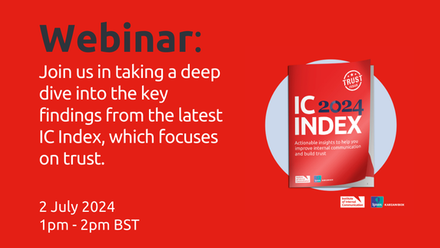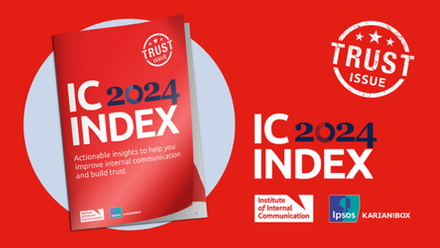Engaging and supporting leaders is a vital component in IC
Engaging effectively with managers is central to any organisation’s success – yet the model of communication businesses employ rarely reflects the unique and pivotal role their leaders play.
What can communication professionals do to set leaders in their organisation up to succeed? Here are four key principles that sit at the heart of effective engagement with leaders.
1. Treat your leaders as a distinct internal audience
This might sound obvious, but it’s rarely done consistently.
To be an effective manager, you have to be able to bring the people in your team along with you and help them understand the difference their work makes. You can only achieve this if you have the information and tools at your disposal to keep your colleagues informed and engaged. That’s why the extent to which you empower your leaders to be great communicators and harness their collective power can be the difference between success and failure.
Treating your leaders as a distinct audience should be a fundamental principle at the heart of every internal communication strategy. This doesn’t just mean engaging leaders on particularly important projects; it means seeing them as a driving force in your organisation – a group of people who need and deserve a different mode of communication to enable them to do their job. Every communications plan you develop should reflect this.
To embed this, think about a visual identity for your leadership communication. This engenders a sense that your organisation appreciates your leaders, and it creates a collective sense of responsibility and ownership.
It also helps to elevate the communication and makes it stand out as something leaders need to take the time to engage with.
Keep it simple – in GreenSquareAccord’s case, we went for GSA Leaders. This identity, even on something as simple as an email or briefing, has made a difference in shifting our relationship with leaders and the expectations placed on them when communication lands.
2. Think about timing
An integral part of engaging leaders is giving them the opportunity to digest news before their team members find out.
One of the worst mistakes you can make is to convey messages to everyone at the same time. It instantly puts your leaders on the back foot as they face questions about something they are only just finding out about themselves.
When this happens repeatedly, your organisation appears disjointed and incoherent, and you disempower and disenfranchise your leaders. You also risk derailing important projects.
Think about how you can bring leaders into the loop to give them the time they need to think about how they’ll engage members of their team and to pre-empt questions.
A well-timed manager briefing that lands even a week before everyone else receives it, especially where there is a call to action, can improve wider engagement.
3. Give leaders tools to help them land messages
Leaders will appreciate that you have taken the time to equip them with the right tools. It can make a difference between a leader taking the time to engage their team or thinking it’s too much effort alongside their day job.
For bigger projects, this could be a PDF toolkit that sets out the timeline for a project and includes activities to engage colleagues.
For other messages, it may be as simple as a few PowerPoint slides they can run through in their next team meeting. One size rarely fits all, so it’s important your solutions match the diverse needs of your teams.
4. Involve your leaders
Take time to understand leaders and find solutions that work for them. Your managers are in tune with the challenges facing the colleagues they lead. They understand the demands on their time, technological obstacles and other factors that will influence the style of communication that works best.
Ahead of the launch of a new culture project at GreenSquareAccord, we ran workshops with leaders to get a sense of what would work best to engage colleagues. For some, a digital solution was needed. For others, especially our care teams, this wasn’t going to work. We co-created the tools with leaders. By the time we came to the wider colleague launch, our leaders were ready to go.
It’s easy to forget a simple truth: the vast majority of communication in our organisations is not owned or overseen by comms professionals. This is why we must empower and equip leaders with the tools they need to land messages and gather feedback on our behalf.
It’s about making our leaders feel special; understanding their needs and the needs of their teams; and responding with a consistent communication approach that reflects their fundamental importance to our organisations.
Like all good communication, leadership comms should be focused, disciplined and repeatable. It relies on implementing and embedding tried and trusted mechanisms that you can repeat.
It's quite simple: if we don’t communicate with our leaders in a way which reflects their importance, we set them, and by extension our organisation, up to fail.




